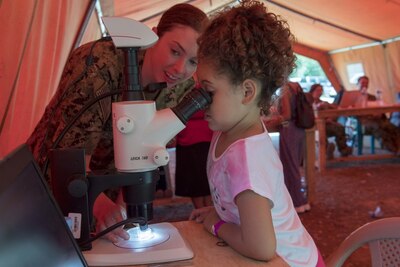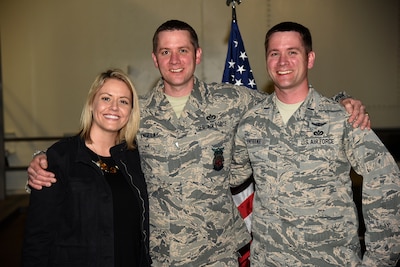By Navy Petty Officer 2nd Class Brianna K. Green, U.S.
Southern Command
PUERTO CORTES, Honduras, March 26, 2018 — The ability to
shower in a remote campground, or shave every morning in a plastic storage
container or walk on dry sand because of proper drainage are all luxuries made
possible by the Continuing Promise 2018 Forward-Deployed Preventive Medicine
Unit 2.
Public health is an essential part of daily life, in and out
of the military. Navy Environmental and Preventive Medicine Unit 2 performs
many tasks to help protect sailors, soldiers and the local community during
CP18.
Team Effort
"Public health is a critical part of any mission,
because if troops are sick, they cannot complete the mission," said Navy
Petty Officer 1st Class Adriane Weldon, a hospital corpsman assigned to NEPMU 2
in Norfolk, Virginia. "Educating the public really does help lessen the
transmission and spread of diseases, as well as build a bond between
nations."
Public health covers a wide range of necessities such as
water purification, epidemiology, parasitology, food-borne illnesses and
berthing and food inspections.
"This is really a team effort here," said Navy Lt.
Cmdr. Amy Rogers, officer in charge of the Forward-Deployed Preventive Medicine
Unit. "We have a physician, an entomologist, environmental health officer
and three preventative medicine technicians."
The team began their mission in Honduras by coordinating
meetings with local hospitals. Then, they gathered a list of needs and
organized training events accordingly.
Rogers explained the impact is on more than one or two
patients, it's about the larger population and sustaining preventive measures
such as the use of bug spray or proper hand-washing and sanitation measures.
Stopping Mosquitoes, Disease
The team hosted an interactive table with microscopes and
specimens such as a scorpion, mosquitoes and houseflies. They went a step
further and explained how children can minimize standing water, which is a
breeding ground for mosquitoes.
Furthermore, during black-flag weather conditions, the team
set up two BG-Sentinel mosquito traps around an open grass field behind the
Franklin D. Roosevelt School in Puerto Cortes to trap day-biting mosquitoes.
"Day-biting mosquitoes spread many of the epidemic
diseases we are trying to prevent," Weldon said. "This area is a
great place to catch mosquitoes because the temperature, climate and extended
period of time that it's warm."
Mosquitoes have a hard time flying against the wind, so the
traps consist of a fan and catch net. The bait is a clear tube filled with
small blue pebbles made of human hormone derivatives and scents, which
mosquitoes cannot resist. Once they enter the trap to explore the scent, they
are unable to fly out against the fan.
"Once we catch the mosquitoes, we usually freeze
them," Weldon said. "We then identify the females by species so we
can determine if they're carrying any diseases."
Weldon went on to say that this area is very high in malaria
and Zika, [so] testing here provides a great deal of valuable knowledge that
helps the team educate the public on how to minimize the risk of transmission.
"A lot of our job is learning and sharing that
knowledge with the host nation," Rogers said. "That's why it's so
great having a team with all different specialties, so we can communicate
things from disaster response to mosquito safety and preventive measures."
Members of the Forward Deployed Preventive Medicine Unit are
truly the unsung heroes of any mission they're on. They are often hard to find,
spending their time exploring the tall grasses and reeds of Honduras to seek
out the creatures that most people avoid. They are the first line of defense
between people and the dangers of the natural world around them.










